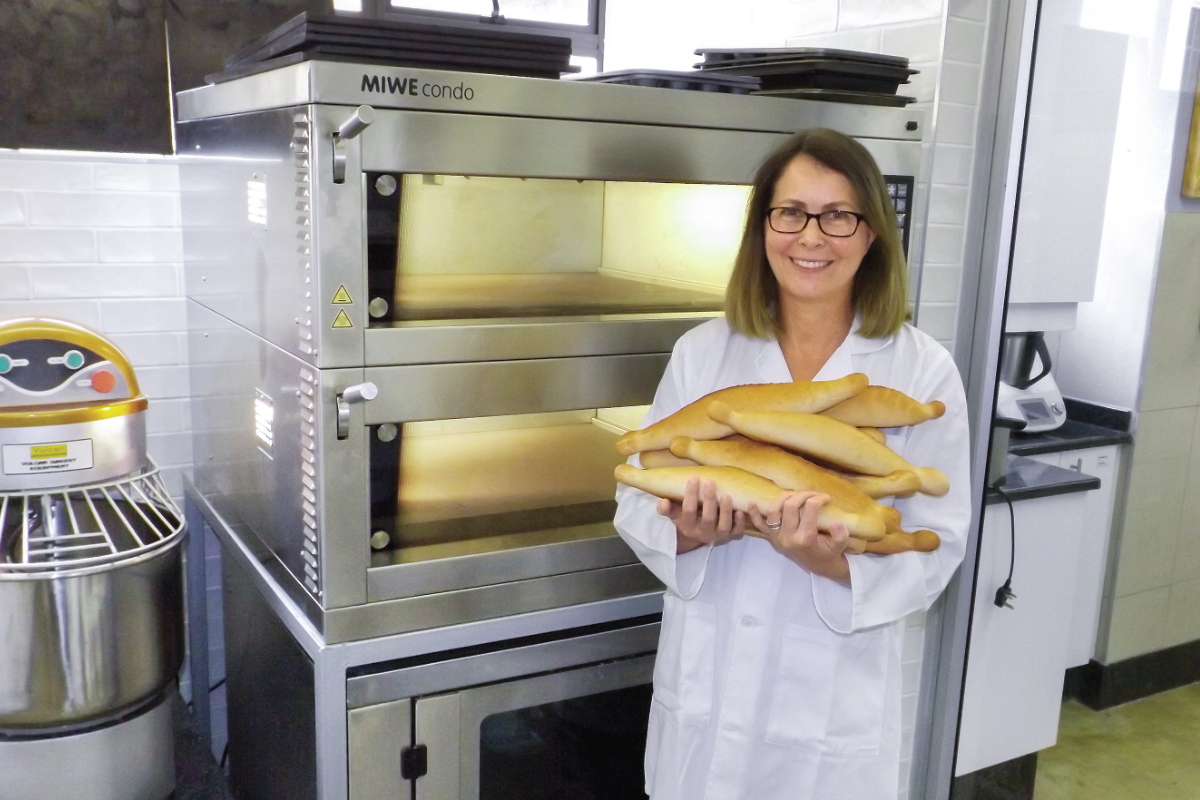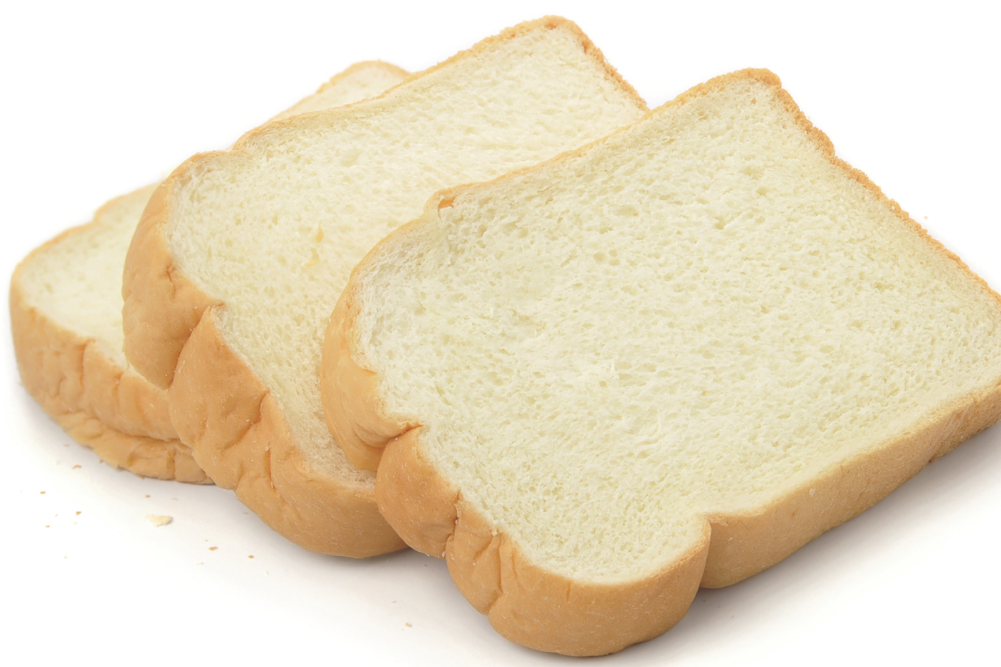"Let there be work, bread, water and salt for all.” With these words, Nelson Mandela emphasized the importance of a comprehensive basic supply of bread for the South African population when he was inaugurated as the country’s president in 1994. This attitude has hardly changed in the meantime. Alongside the traditional maize meal, wheat bread is still a main component of the diet of around 60 million South Africans.
The average bread consumption per capita is currently three slices (100 grams) per day, with consumers preferring to buy packaged, sliced, sandwich bread.
A large part of the market is covered by the big players Pioneer Foods, Tiger Brands, Premier and RCL Food. These food companies run both industrial bakeries and mills of their own.
When it comes to grinding, the mills generally use imported wheat in addition to domestic wheat. Even though the government has been trying for many years to massively expand local wheat cultivation, domestic agriculture only covers between 40% to 50% of the total wheat demand.
The quality varies considerably, as there are major differences between the individual growing regions in terms of climate, rainfall, environmental interaction and cultivation practices.
Three crop regions
There are three wheat-breeding programs in South Africa: winter rainfall, summer rainfall and irrigation areas. The major producer is the Western Cape province, which has a Mediterranean climate characterized by cool, wet winters and hot, dry summers. More than 80% of the rainfall is received in winter between April and September, making the Western Cape a predominantly winter rainfall area.
The summer rainfall area is mainly in the Free State province, the major area for dryland wheat production.
Examples of irrigation areas are to be found in the Northern Cape along the Orange River, in Limpopo, Gauteng and Mpumalanga.
The 2019-20 season’s commercial wheat crop totaled 1.535 million tonnes. Wheat production in Western Cape in 2019-20 was 650,000 tonnes, in Free State 326,000 tonnes and in Northern Cape 265,000 tonnes.
A comprehensive quality report on the annual harvest is provided by the Southern African Grain Laboratory NPC (SAGL). The table below presents an overview of the average flour quality of the 2019-20 crop.
The 333 representative crop samples of the 2019-20 season were classified as follows: 40% were graded Super Grade BS; 17% were graded B1; 7% were graded B2; 4% were graded B3; and 32% were graded Class Other Wheat. Super Grade (BS) requires a minimum protein content of 12.5% (12% moisture basis).
Although the current crop is of good quality, the quantity is by no means sufficient to meet the steadily growing demand of South African consumers for baked foods, pizza and pasta.
As a result, the milling industry relies on imports. According to SAGL, the amount of wheat imported for local consumption during the 2019-20 season was 1,545,999 tonnes (including imports up to July 2020). The majority of this wheat originated in the Russian Federation, Poland, Germany or Lithuania.
As a rule, South African mills mix imported wheat with domestic batches. The main objective is standardization, since consistent, uniform flour properties are the most important quality parameter.
Three basic flour types
The South African mills provide three basic types of flour for baked foods: white bread flour, cake flour and brown bread flour.
Cake flour is a low extraction flour with a fine texture and an ash value of approximately 0.55%. It is used primarily for puff pastry applications, cakes, scones, tarts and biscuits.
White bread flour is a bread-making flour with a marginally higher extraction than cake flour and an ash content of approximately 0.78%. It is mostly used in the production of white bread and buns, since they require a lighter color, strong protein and considerable volume.
Brown bread flour is a bread-making flour with a maximum ash content between 0.6% and 1%, to which between 10% and 15% wheat bran is added. The whole wheat flour “proper” contains all the components present in the wheat kernel after milling the whole wheat. It is used for baking products that require a darker color and a higher level of dietary fiber.
The Chorleywood Bread Process
A high percentage of the flour is used for sandwich bread production. South African consumers expect an attractive volume, a fine and even texture, a soft, light-colored crumb and a shelf-life of 6 to 8 days.
Sandwich bread is mainly produced by industrial bakeries, using the Chorleywood Bread Process (CBP). This method, developed in England in 1960, is characterized by two main benefits: a large proportion of lower-protein wheat may be used in the grist, and the entire process from mixing to the finished loaf only takes about two hours. If subsequent cooling, slicing, and wrapping are included, the average production time is 3 1/2 hours. By contrast, the sponge-and-dough method takes 4 to 7 hours. The mixing process itself only takes 4 to 5 minutes, depending on the desired energy input and crumb structure.
The Chorleywood Bread Process combines a high-speed mixer (usually a Tweedy mixer) with the option of varying the pressure. The first stage of mixing takes place at an overpressure of about two bars in a closed vessel. During this phase, large amounts of oxygen are worked into the dough to increase or speed up oxidation. Development of the gluten and dough can therefore already be promoted at the mixing stage.
The second phase of mixing takes place in a partial vacuum at about 0.5 bars. The gas bubbles in the dough therefore expand and are then reduced again in size in the high-speed mixer. This increases the number of pores, and the crumb structure can be controlled precisely. If the dough is subsequently worked at normal pressure, the bubbles shrink and the finished bread has the typical, very fine, soft and even texture. A further advantage of the high-speed mixer is that it increases water absorption by 2% to 4%.
Fine-tuning with flour improvers

The Chorleywood method improves the quality of the baked foods mainly by physical means. Nevertheless, some additives and ingredients are essential for ensuring uniform quality in this process. The oxidizing and maturing agent ascorbic acid is indispensable, as are various emulsifiers and enzymes that ensure a fine-textured, elastic crumb and a long shelf-life.
Frequently used additives include DATEM (Mulgaprime 16), SSL (Mulgaprime SSL) and MDG (Mulgaprime 90 F). With their bleaching effect, lipoxygenases from enzyme-active soy flour (SOYnovo VES) brighten the crumb. The dosage of amylases is greater than that used with conventional methods because of the short processing time. Whereas malt flours were commonly used in the past, the process is now controlled with enzyme systems consisting of amylases, xylanases and in some cases other activities such as Alphamalt A 6003.
To balance the protein level and to increase water absorption, EMCEgluten Enhancers and EMCEbest WA may be used.
As the falling number of local wheat is high in South Africa at present (according to SAGL the weighted average falling number in 2019-20 is 353 s), the functional enzyme system Deltamalt may be used both to reduce the falling number and improve baking performance. This flour improver constitutes a real improvement, since it used to be impossible to combine these requirements in a single additive.
South African mills are struggling with inhomogeneous wheat qualities. The baking properties of the wheat from domestic production depend, among other things, on the growing region, but also on the use of fertilizers and irrigation systems. The situation is similar with imported wheat: these batches also come from different countries of origin and exhibit highly variable rheological properties and protein levels. Enzymatic flour treatment enables millers to produce high-performance flours with consistent product parameters — despite the difficult raw material supply.
South Africa’s bakers face salt-reduction directive
Salt is an important flavor carrier in food. However, since an excessive intake of sodium chloride (NaCl) can lead to serious cardiovascular and vascular diseases, the South African National Department of Health has set itself the goal of limiting the average salt consumption of the population to 5 grams per day. As a consequence, 100 grams of bread may only contain 3.8 grams of salt since 2019.
For bakeries, especially, these regulations pose a challenge. The addition of table salt is not just a matter of taste — it also plays an important role in stabilizing the gluten network. A low salt dosage can have a detrimental effect on fermentation tolerance and the texture and shred of the loaf porosity. Since the activity of the yeast and also the oven rise and baked volume increase when the salt content is reduced, there is in principle a risk that the structure of low-sodium doughs will collapse toward the end of proofing.
Mühlenchemie, in cooperation with its sister companies DeutscheBack and SternEnzym, has developed a functional solution that effectively improves the rheology of the dough and the appearance and texture of low-salt baked foods. Saltase is a highly effective enzyme system specifically designed to maintain the dough structure and machinability. Baking trials with white bread at the company’s Stern Technology Center showed that 40% of the salt can be replaced by Saltase without any loss of quality in terms of volume or crumb structure.
While pure Saltase enzymes focus exclusively on technological aspects, the Saltase Plus specification also compensates for the taste disadvantages of a salt-reduced recipe. A balanced combination of potassium chloride and yeast extract gives the low-salt baked foods a pleasant saltiness without a bitter aftertaste.
In general, a gradual one-to-one replacement of salt with Saltase is recommended. The more cautiously the changeover to lower-sodium baked foods is made, the greater is the acceptance by customers.
Sven Mattutat is a product manager with Mühlenchemie. He may be contacted at [email protected]






